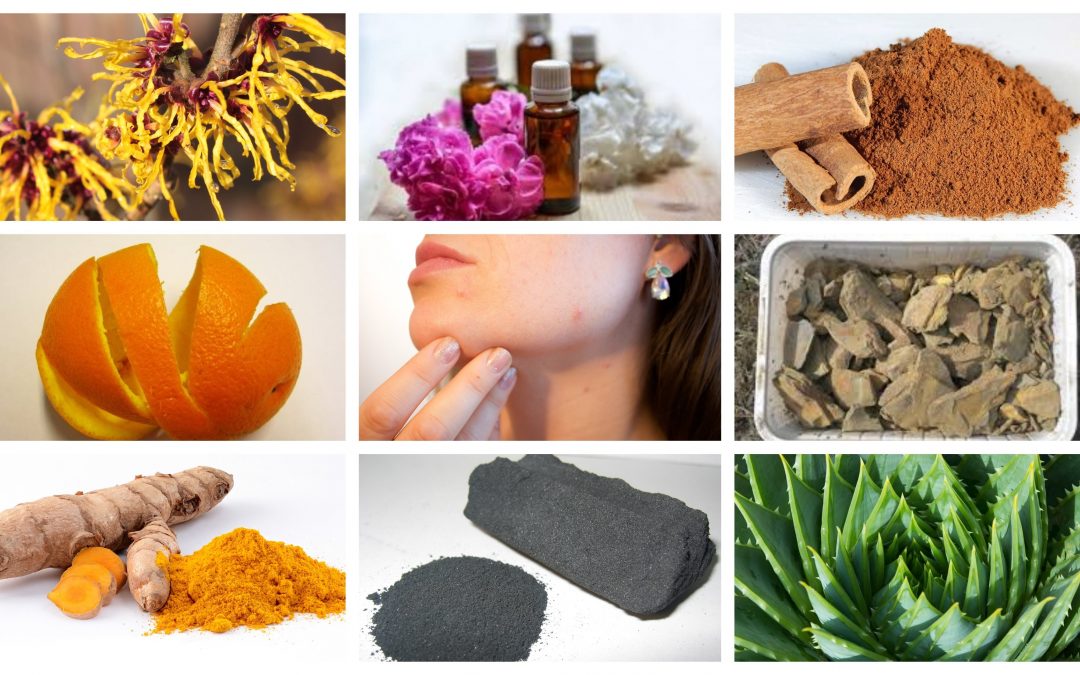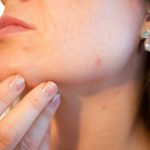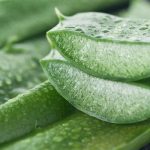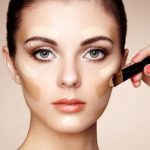It is very annoying to have those tiny red bumps on the skin especially face. Therefore, when pimples appear there is nothing more important than getting rid of them as soon as possible. In this vulnerable situation, it is crucial to choose your remedies wisely and avoid impulsive acts like popping your acne with finger nail which may lead to permanent scars. In this article, I will be talking about best home remedies to remove pimples.
Yes it is possible to cure acne by few simple home remedies. Before we read about the treatment of acne, let us first understand in brief why do you get pimples? Excess sebum or oil from sebaceous glands along with debris of dead skin cells and hair cells blocks the skin pores. With time, bacteria start colonizing and flourishing inside these pores. When the pressure inside the plugged pores rise beyond limit, it bursts and the contents from deep inside the skin pores gets exposed leading to infection and inflammation and the pimples appear red, hot swollen and painful. At this stage the inflammatory variety of acne such as papule, pustule, nodule and cysts are formed.
All this happens under hormonal influence (Androgens). Therefore, we can say that although pimples appear on the surface of your skin, their cause is deep down inside your body. This problem is commonly seen during puberty due to secretion of high levels of androgens. Some of the common conditions in which acne is common are: Menstruation, Pregnancy, Menopause, hirsuitism and Polycystic Ovarian Disease (PCOD). Hormonal imbalance is the underlying cause in all the aforementioned conditions. Let us now have a look at the best home remedies for acne that have profound effect on clearing up the skin.
Acne Treatment options available in modern scenario
As our understanding of the disease process is improving with each passing day, newer treatment options are becoming available. Talking about Acne, the first line of treatment according to general consensus is topical retinoids either alone or in combination with benzoyl peroxide. In moderate to severe inflammatory acne, topical or oral antibiotics are the first choice. They may inhibit the growth of bacteria and reduce inflammation but, having said that, they have side effects such as dryness, itching, burning, redness, peeling of skin and above all antibiotic resistance. Hormone therapy is considered in female patients with severe seborrhea where alopecia is clinically apparent1.
Isotretinoin (Retinoid) is used for the treatment of severe cystic acne unresponsive to any other treatment. The possible side effects of isotretinoin are depression, suicidal thoughts, elevated liver enzymes, photophobia and teratogenicity (it interferes with the development of fetus causing birth defects). Let us now explore the natural ways of treating acne where the results may not be as prompt as modern methods but surely would be long lasting and safe.
Home remedies for Acne
The advantages of using home remedies for acne is to reduce skin inflammation and inhibit the bacterial growth in a safer and gentler way without causing any side effects. We have many anti-inflammatory agents and antibiotics such as turmeric, cinnamon etc. in our kitchen cabinets that can cure acne in a natural way. Let us explore the best home remedies for acne one by one.
1. Tea tree Essential Oil
Tea tree essential oil is obtained by steam distillation method from the leaves of the plant Melaleuca alternifolia native to Australia. It is nature’s best gift for our skin. The reason behind its popular demand is its antimicrobial, anti-inflammatory, anti-septic and anti-acne properties.
Tea tree Essential Oil has been shown in researches to be very effective for acne, blackheads, dark spots, scars, blemishes, rashes, and hyperpigmentation of skin. Its Antibacterial properties fight infection and promote healing of acne.
A research study compared Tea tree Essential Oil and Benzoyl Peroxide. The results showed that both treatments reduced inflammation in acne effectively however Tea tree was superior in terms of lesser side effects because benzoyl peroxide resulted in significant scaling, dryness and itching of skin.2
How to apply Tea tree essential oil
- It can be applied directly on the acne by putting a drop on cotton swab and dabbing it on the pimple. However it is wise to do a patch test before applying it directly on face.
- DIY Tea Tree cream: Another way of using tea tree oil is by making your own Tea Tree cream by mixing 4 drops of tea tree oil with 1 teaspoon of carrier oil such as coconut oil, jojoba oil or almond oil. Apply it on your face and it will work wonders in clearing up your skin. You can add 8 drops of lavender oil to the above preparation and achieve greater benefits as lavender oil has remarkable effects on skin.
Where to buy Tea Tree Essential oil
Always buy your essential oils from a “trusted supplier” because there is no way you can find out whether the oil you are buying is pure or not unless you buy it from a trusted supplier. Similarly, the market is flooded with tea tree based creams. You will get desired results only if you buy it pure. Certain organic companies like “Vidhyanjali Ahinsa Sondarya” are supplying really pure essential oils along with highly researched and authentic essential oil based creams.
2. Activated Charcoal
I will give 10 on 10 to this product for its ability in clearing up the skin. It is matchless in attracting toxins and dirt from the skin pores. Activated charcoal is nothing but carbon made by burning coconut shells or wood that is chemically treated and subjected to high temperatures to make it highly porous and increase its adsorptive powers.
It cleans out the pores by adsorbing excess oil, bacteria and dirt. Thereby reducing inflammation and clearing up pimples and blemishes. Activated charcoal facial mask very effectively removes blackheads, whiteheads, papules and pustules.
Who can be benefited with Activated charcoal face mask?
If your skin is oily or combination type and acne prone, then Activated Charcoal face mask is very beneficial for you. But if your skin is dry you should avoid using it since it absorbs excess oils from the skin pores, it will rob you off of whatever little oil you have in your skin. People with dry skin should prefer using more hydrating facial masks instead.
How to apply Activated Charcoal?
Applying activated charcoal face mask is like a deep cleaning of your face. Do it at least once a week. You can use it in many ways such as Activated charcoal facial mask, soap or facewash.
- Activated charcoal facial mask: Mix 1 teaspoon of activated charcoal powder with 1 teaspoon rose water or normal water. Apply this smooth paste on your face evenly avoiding delicate areas like eyes and lips. It will take some 15-20 minutes to dry. Once completely dry, wash your face with warm water and gently clean with a soft towel.
3. Bentonite clay
Bentonite clay or Montmorillonite clay is a natural detoxifier and a natural alkalizer (its pH is between 8 and 9). It can be either applied externally or even taken internally as a supplement. We are exposed to plentiful toxins daily through pollution, dirt, food and water we drink, medicines we eat, and pesticides. So, there is a strong need to detoxify our body from time to time. Another name for Bentonite clay is “Volcano Ash”. It is not something new; it’s a traditional and popular way of healing or cleansing the body. It has the unique ability to pull out toxins from the fluid it comes in contact with.
How to apply Bentonite clay
Combine it with water and apply it as a facial mask. It will take some time to dry. Take it off with the help of warm water when it is completely dry. Use it once a week.
Although Bentonite clay has a much higher pH and bacteria do not grow at such high pH, still it is a good idea to make fresh mask every time you want to apply.
What does Bentonite clay basically do?
It unites with the bacteria and dirt present within your skin pores and pulls them out. This helps in reducing the redness, swelling and pain caused by inflammation; prevent the bacterial growth and heal the acne.
4. Witch Hazel
Witch Hazel is widely admired for its anti-inflammatory, cleansing, toning and healing properties. It is obtained from the leaves, twigs and bark of the shrub Hamamelis Virginiana native to North America and Japan.
Witch Hazel removes dirt and oil from the pores of the skin, reduces inflammation, heals infection and cures acne. It naturally tones the skin by shrinking and tightening the skin pores.
How to make Witch Hazel astringent at home?
You can make your own Witch hazel astringent at home by few simple steps:
DIY Witch Hazel astringent:
- Take fresh twigs of witch hazel shrub and mince them slightly.
- Place them in pan containing water and bring it to a boil. Use distilled water so that bacteria do not make way in your preparation and this way it will last longer.
- Let it cook for few hours on simmer.
- Cool the mixture. Sieve it into a clean air tight container and refrigerate it. It will stay viable for around 3 weeks.
You can apply it directly on your acne. Dip a cotton ball in the astringent and dabble it gently on the acne. Repeat it 3 times a day. Do not overuse it as it can be drying for the skin.
5. Aloe Vera
Aloe Vera is found to have antibacterial, antiviral and antifungal properties due to presence of certain antiseptic agents such as lupeol, salicylic acid, phenols, sulphur and saponins. Saponins are soapy substances present in the Aloe Vera gel responsible for cleansing action on skin apart from being antimicrobial. Out of the many benefits of Aloe Vera, one of them is to treat acne. A very interesting fact about Aloe Vera is that it enhances the efficacy of known acne fighting ingredients when used synergistically with them.4
One of the research studies observed Aloe Vera as a potent antimicrobial agent compared with antibiotics3. You can make Aloe Vera gel at home or buy an Aloe Vera cream and apply. Make sure the Aloe Vera cream you buy is pure and organic.
6. Cinnamon
Cinnamon, apart from being a useful spice and flavoring agent, is an important beauty tool too.
Cinnamon bark contains essential oil which has medicinal effects on our body due to presence of constituents like cinnamaldehyde (responsible for its fragrance and spicy taste), cinnamic acid and eugenol5. It is anti-bacterial, anti-inflammatory that gives it acne curing properties.
How to use cinnamon for acne?
Always use organic Ceylon cinnamon (Cinnamon zeylanicum) which is a superior quality cinnamon as compared to Cassia cinnamon (Chinese cinnamon or C. aromaticum).
To make cinnamon facial mask, you can use freshly grounded cinnamon powder or cinnamon essential oil. Mix 1 teaspoon of cinnamon powder (or 2 drops of cinnamon essential oil) with 2 teaspoon of either coconut oil or aloe vera gel or milk and apply on your face. Let it stay there for 20 minutes and then wash it off.
Coconut oil and Aloe vera gel both have antibacterial and anti-inflammatory properties that help in getting rid of acne effectively. The acid present in milk is anti-bacterial in nature that fights acne. The fats in milk act as moisturizer for skin. It is a very soothing facial mask that reduces the itching and redness caused by acne.
7. Neem
The main reason why neem is effective in controlling pimples is that neem leaves are known to own antimicrobial, anti-inflammatory and antioxidant properties which means it has an inhibitory action against the acne causing bacteria. Also, it helps in reducing the signs of inflammation (redness, swelling and pain) caused by acne.
It is very important to choose your neem product (soap, oil, paste) wisely because you will not get the desired results unless you use pure products. For example if you want to buy a neem soap always go for a good quality handmade organic soap that contains pure unadulterated neem essential oil. Alternately, follow these simple steps to make your own neem face pack at home.
- Take fresh neem leaves and wash them thoroughly.
- Make a paste and apply all over your face and acne prone areas.
- Rinse off when it is dry.
- Always do a patch test before applying neem directly on your face.
Patch Test
Rub a small quantity of Neem paste on the inside of your forearm just below your elbow. Watch your skin up to 48 hours. If any sign of allergy such as redness, itching or swelling appears, then wash your skin and discontinue use.
You can also use neem leaves in your bath water by boiling few neem leaves for few minutes and then straining. Then add this medicated water to your bath water.
8. Fuller’s Earth (Multani Mitti)
Multani mitti is excellent in removing pimples, blackheads, whiteheads or acne marks. It is a grey colored mud which is very effective in opening up the clogged pores and absorbing excess oil from oily skin. Best way to use it is with either sandalwood powder or rose water.
How to use multani mitti for acne
You can make your own DIY multi mitti pack at home by mixing multani mitti in a variety of ways to treat acne.
- Mix 2 teaspoon of multani mitti with 1 teaspoon of rose water or
- Mix 1 teaspoon multani mitti with 1 teaspoon of sandalwood powder and 1 teaspoon rose water or
- Mix 2 teaspoon miltani mitti with 1 teaspoon neem powder and 2 teaspoon rose water.
Apply this face pack on your face. Let it stay there for 20 minutes and wash it off with cool water when completely dry. Use it once in 2 weeks.
It cleans the skin deeply and removes dirt, excess oil and impurities. It is very soothing for skin due to its cooling nature that helps in reducing redness and skin inflammation. Multani mitti also helps in fading away pimple marks and reduces hyperpigmentation of skin.
9. Orange peel paste
Do not throw away the orange peels as they have great potential in treating pimples. Orange peels are rich in anti-oxidant properties due to high vitamin C content. Orange peel paste has strong antibacterial properties that help in getting rid of acne.
How to make orange peel paste
You can make orange peel paste at home by following few simple steps:
- Sun-dry some fresh orange peels.
- Finely grind them and make a smooth powder
- Add water to make a paste
- Wash you face with warm water and apply this paste on your face including pimple areas. Let it stay there for 20 minutes. Wash it off with cold water.
Orange peels exfoliate your skin. The essential oil present in it lightens and brightens your complexion and gives a youthful appearance.
10. Turmeric (Haldi)
Turmeric is being used cosmetically in every household since ages. It is an effective home remedy for pimples due to its anti-inflammatory properties.
How to use turmeric for acne
Add 2 pinch of turmeric powder in 2 teaspoons of coconut oil. Mix the mixture well and apply on your face. Let it stay there for 20 minutes and then wash it off.
Summary
All these herbs and their extracts are powerful cleansers. Home remedies show splendid anecdotal results, they are used since ages in almost every household. Every skin is different. You have to find yourself what suits your skin best.
Few simple tips that you should follow additionally are:
- Avoid chemical based cosmetics. Always go for pure organic chemical free and preservative free face creams, scrubs etc.
- Keep your face clean. Do not touch it often.
- Make good dietary choices. Include more fresh fruits and vegetables in your diet.
- Limit the intake of sugars and processed foods.
- Remember one thing; there will always be certain foods that aggravate your acne while others may not have any problem with those foods. So identify your aggravating factors and avoid them!
- Drink plenty of water.
- Avoid sedentary lifestyle. Be active. Start exercising. It will not only supply more oxygen to your cells but also help in cleaning the skin pores as a result of sweating.
References
-
- Rathi S.K. Acne vulgaris treatment : the current scenario. Indian J Dermatol. 2011;56(1):7-13.
- Bassett I.B., Pannowitz D.L.,and Barnetson R.S. A Comparative Study of Tea Tree Oil versus Benzoylperoxide in the Treatment of Acne. Med. J. Aust. 1990;153:455-458. To view online: https://www.ncbi.nlm.nih.gov/pubmed/2145499
- Bezalwar P.M.,Gomashe A.V.,Gulhane P.A. A quest of Anti-acne Potential of Herbal Medicines for extermination of MDR Staphylococcus aureus. International Journal of Pharmaceutical Science Invention. Volume 3 Issue 6 ‖ June 2014 ‖ PP.12-17.
- Orafidiya L.O. et al. The effect of aloe vera gel on the anti-acne properties of the essential oil of Ocimum gratissimum Linn leaf – a preliminary clinical investigation. International Journal of Aromatherapy. Volume 14, Issue 1, 2004, Pages 15-21.
- Rao PV, Gan SH. Cinnamon: a multifaceted medicinal plant. Evid Based Complement Alternat Med. 2014;2014:642942.






Very informative!!
Thankyou..I am glad you found it useful:)
Thanks for sharing, really useful :)!
Thankyou Eddy..I am happy you found the post useful…Do try the remedies!
These are best ways to treat acne prone skin. I have used charcoal face mask to treat my face acne and it worked well for me. My skin looks fresh and clear now. Thanks and keep sharing.
Glad to help you Lisa:)..Please keep coming back and share your valuable feedback and experience!
There is apparently a bundle to know about this. I assume you made various nice points in features also.
Thankyou for liking!